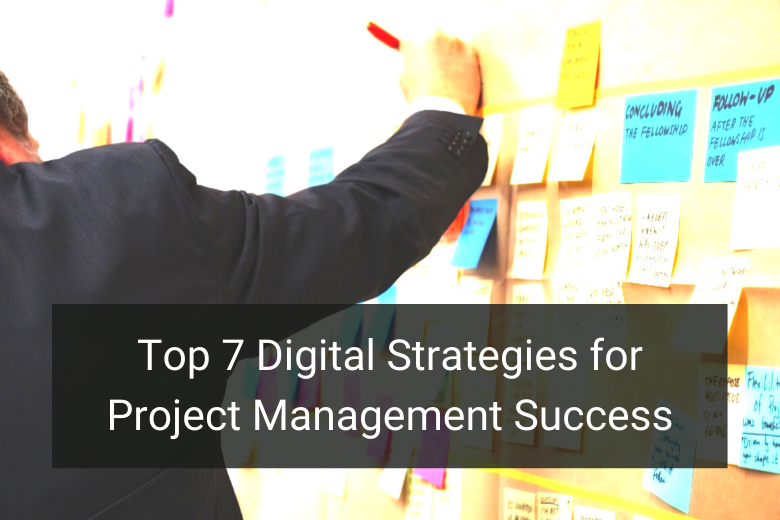Uncover the most effective strategies for project management to lead all digital projects without difficulty or delay
Project managers are a connecting link between the development team and the client. Their role in the company is complex and multifaceted.
From project planning to client communication, project managers (PMs) are expected to ensure the correct and consistent implementation of projects on every level. Their decision-making is pivotal to whether the project ends up being a success or a fiasco.
The project management process is multi-level and requires considering plenty of factors and coming up with a smart strategy for project fulfillment. While every project is exclusive, there are some patterns of project management that can be potentially beneficial for driving the right outcomes. Some of them are built on project estimation techniques that allow for faster and error-free project development.
The project estimation techniques below will help you lead the digital project development smoothly, avoiding the common project management challenges.
1. Project assessment
Before starting off any project, it is vital to analyze its complexity, purpose, run-time, and technical challenges.
The PM should develop a good understanding of project business objectives and what value the project is going to create in practice. At this stage, stakeholders can be equally involved in discussions so as to form one unified project vision. The scope of work and deliverables for every area of the project should be determined as well.
What you should keep in mind is that by the end of the project assessment stage, the PM should have a detailed document where all these aspects are clearly defined.
2. Project planning
The main pitfall of project planning is that at times PMs tend to overestimate the actual team’s capacity as a result of which the project plan is bound to fail despite the efforts being made.
To make a feasible plan, you should take into account the project’s budget, timing, goals, and stakeholders’ expectations. The rough plan usually divides the scope of work into smaller tasks, each having a number of sub-goals. But sketching out the volume of work is not enough to start off a project successfully.
You should also convey it to the team so that every worker has the right idea of what s/he is expected to contribute during project development. This also helps every team member realize the level of responsibility they are going to take up and as such makes them accountable from the beginning.
The final plan should be unambiguous and well-elaborated. If the plan changes, make sure you notify of the changes to all the employees involved with any of the project development stages.
3. Risk management
Risk assessment is what allows you to build immunity against a variety of adverse events that might follow the development of any project.
Risks exist in any area of the project, be it challenges facing technical staff or lack of specific software. You cannot foresee every possible risk that may disrupt the project management process, but you can identify the major ones and find the means to mitigate them if they take place.
To date, more and more companies rely on risk management software that enables the ongoing monitoring of basic project risks (schedule, costs, performance, quality, etc.). Such tools are desirable to integrate into project management practices as the PM can manage the highest risks before they impact the deliverables.
4. Embrace the Agile framework
The Agile method is now widely used in many business areas.
Its main benefit boils down to the team’s ability to quickly respond to unexpected changes without compromising the quality of the final product.
Conducting a sprint meeting at the end of every project development stage lets the dev team be more flexible in their project building and adapt to the client’s needs better as they can change the product’s features based on the client’s feedback during project development.
The appeal of Agile also lies in cross-functional collaboration that leads to higher transparency about the project development processes. Tasks are not supposed to be solitary but should involve the minimum awareness and interaction between teams working on the project. The unified vision of the project eventually results in higher project quality and reduced risks.
![]()
5. Tracking project progress
Project monitoring is the main task of project managers.
It basically requires tracking the key project parameters which are time, cost, quantity, and quality. As soon as any of them start deviating from the requirements and limits set in the initial project plan, the PM should take relevant measures to balance the project development and align its processes.
The other big factor contributing to project progress is the team’s performance. Unless they complete the scheduled amount of work on time, project success comes into question.
To control all the project development processes, PMs can use project management tools to track project progress and detect variations that demonstrate the divergences between the project plan and the project implementation.
6. Allocating more time for de-bugging
The post-launch stage might seem less complicated, but in reality, it can be very tough.
Testing shows whether your product is able to meet the KPIs and milestones. It often happens that the software rarely hits them on the first try. Each release of software unveils inefficiencies that can require more time than you provide at the start.
This is why PMs should be ready to invest more resources in de-bugging until the final product takes the form that fully meets the client’s needs.
7. Providing a favorable business environment
Project success is equally defined by the working environment where your team operates.
Besides creating a comfortable real-life workspace, you can improve the quality of business environment by adopting smart digital tools that foster better communication and productivity.
For instance, chatbot assistants help to organize the workflow and arrange business meetings automatically as well as can perform other managerial functions, if necessary.
What defines project management success?
The above-mentioned tips can be of much use to any person involved with project management practices.
However, you should remember that the main rule for pulling it off is to be honest with the client whatever difficulty you may encounter. You might think otherwise at the moment of facing trouble, but building trust with the client is not only about living up to their expectations but also the ability to address challenges openly without hiding that something goes wrong.
The risks go higher if the PM decides to settle the situation independently and without consulting with the client. As such, project success is always a result of the PM’s ability to lead the team through project challenges and engage the client in certain aspects of the project development process that require common involvement.

Ready To Upgrade Your Logistic Solution?
Speak to Floship ecommerce logistic consultant about improving your global support chain today





